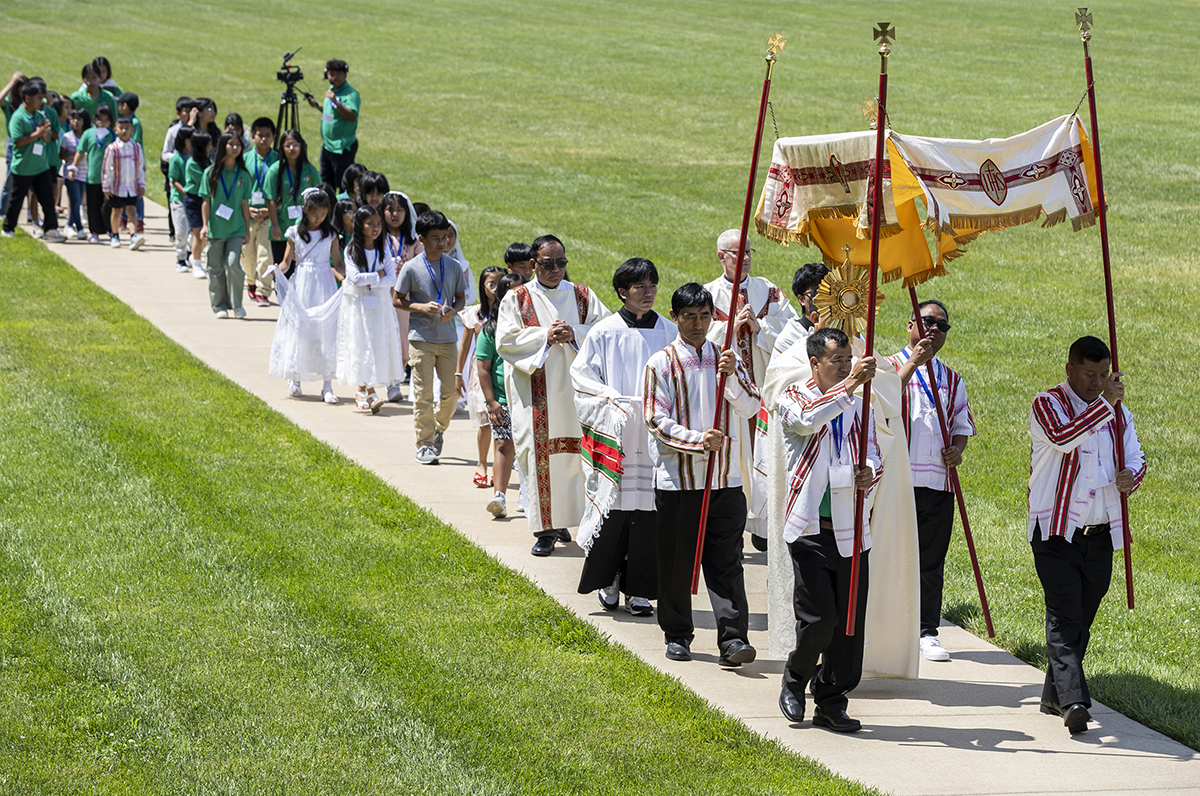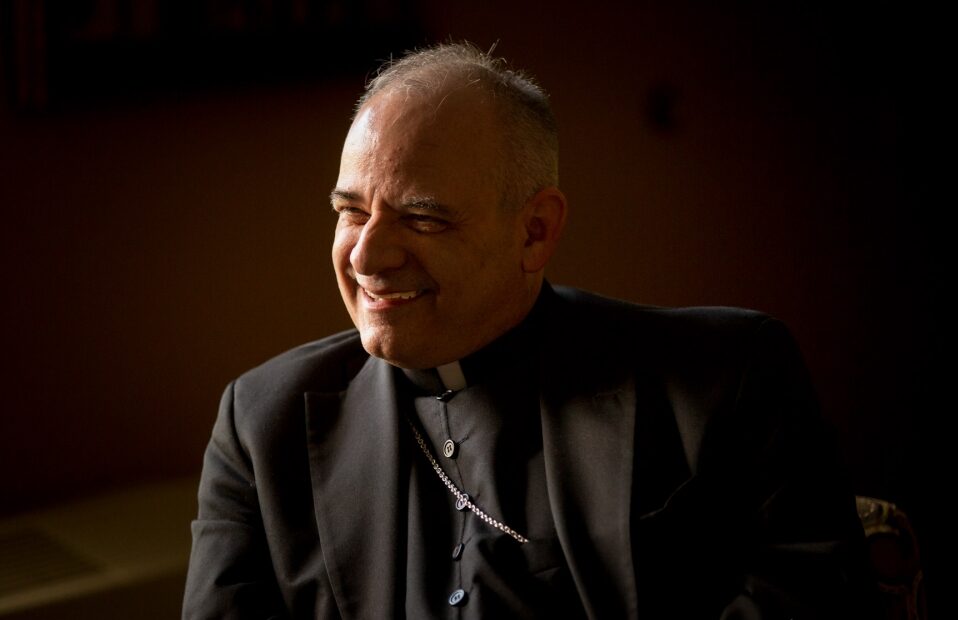‘Ad limina’ visit is time for dialogue between the bishops, Holy See

Archbishop Carlson and other bishops from the Midwest visited Rome for quinquennial visit with Holy Father
The “ad limina” visit with the Holy See is a time for dialogue between the Holy Father, Vatican officials and the bishops representing various dioceses around the world.
Archbishop Robert J. Carlson and other Midwest bishops are in Rome this week to report on the state of their dioceses.

In a phone interview from Rome, Archbishop Carlson said he eagerly anticipated getting the chance to talk to Pope Francis on Thursday — his first time meeting with him. The archbishop met with Pope John Paul II and Pope Benedict XVI on previous ad limina visits.
Archbishop Carlson said he was looking forward to talking with Holy Father about his love for Catholics in the Archdiocese of St. Louis. “It’s what I always say: The people of St. Louis are friendly, they have deep faith, and they’re very generous,” he said. “Obviously I’ll expand on those things. And it’s broader than the Catholic community, too. I love the associations we’ve had with the ecumenical community as well.”
The archbishop is at the Vatican along with bishops from Region IX — Iowa, Missouri, Kansas and Nebraska — as part of their required every fifth-year visit with the Holy Father to present what is essentially a state of the archdiocese report. Traveling with the archbishop on the Jan. 13-17 visit were Auxiliary Bishop Mark S. Rivituso and Father Zachary Povis.
The ad limina is formally known as the “quinquennial visit ad limina apostolorum” and refers to the obligation of diocesan bishops to visit every five years with the pope to report on the state of their dioceses. As outlined in nos. 399-400 of Canon Law, the Quinquennial Report serves as a means of promoting the relationship of communion between particular Churches and the Roman Pontiff. The preparation of the report is considered a time for reflection on the current state of the diocese and pastoral planning for the future. The report is sent to the Holy Father months in advance of the visit to prepare for his personal and pastoral meeting with each bishop. A copy of the report also is dissected and sent to the various dicasteries, or departments, of the Roman Curia.
One of the first documented “ad limina” visits goes back to St. Paul’s Epistle to the Galatians (1:18): “Then three years later I went up to Jerusalem to become acquainted with Cephas (Peter), and stayed with him 15 days.”
During the visit, each bishop also venerates the thresholds of the tombs of the apostles Sts. Peter and Paul and visits with various dicasteries, or departments, of the Vatican.

Archbishop Carlson said he’s appreciated the open dialogue with the dicasteries. “They want to know what our questions are, and want to know about things we’re working on. It’s a back and forth discussion, and I have found that to be very refreshing.”
In a meeting with the Dicastery for Laity, Family and Life, the archbishop met a staffer who is working with programs for married couples, which the archbishop said he’d like to further research upon his return to St. Louis. “We spend much of our time preparing people for marriage, but this is a way for couples to get together and talk about their marriage and love for one another,” he said.
The archbishop also has concelebrated Masses with other bishops at the major basilicas, and visited with Fathers Christopher Seiler and Stephen Schumacher, and seminarian Eddie Godefroid, all from St. Louis.
The “ad limina” visit with the Holy See is a time for dialogue between the Holy Father, Vatican officials and the bishops representing various dioceses around the world. Archbishop Robert … ‘Ad limina’ visit is time for dialogue between the bishops, Holy See
Subscribe to Read All St. Louis Review Stories
All readers receive 5 stories to read free per month. After that, readers will need to be logged in.
If you are currently receive the St. Louis Review at your home or office, please send your name and address (and subscriber id if you know it) to subscriptions@stlouisreview.com to get your login information.
If you are not currently a subscriber to the St. Louis Review, please contact subscriptions@stlouisreview.com for information on how to subscribe.






